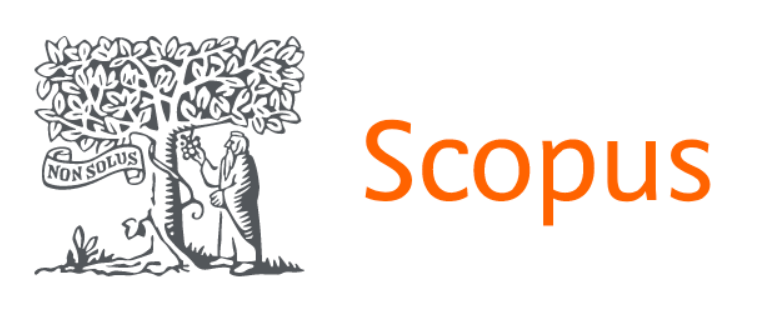EFFECTS OF FOREİGN SUBSTANCES İN FOOD PRODUCTS ON THE HUMAN BODY
DOI:
https://doi.org/10.18623/rvd.v22.n2.3481Palabras clave:
Food Safety, Food Additives, Nutrition, Xenobiotics, Human HealthResumen
Food additives began to be used in the industry at the end of the 19th century and have now reached their peak worldwide. In rapidly developing food technology, the use of food additives is highly significant for public nutrition. Adding food additives to products to change their appearance and taste, as well as to ensure long-term preservation without spoilage, holds special importance. Objective. The purpose of this study is to raise awareness among consumers about the production and consumption of products with E-indexed additives and to inform regulatory authorities responsible for product quality control, thereby facilitating their work in this field. Materials and Methods. This study is based on materials published in various scientific sources and online resources. The ingredients listed on the labels of locally and internationally produced food products were examined as research material. The study employed theoretical-methodological and empirical research methods. Conclusion. When studying the harmful effects of foreign substances on the human body, not only should a single food product be examined, but also the entire diet, considering the types, quantities, and effects of xenobiotics present. Special attention should be given to the frequency of consumption of a particular food product (whether it is eaten frequently or rarely). In other words, when evaluating the impact of chemical substances on the body, the overall dietary background must be taken into account.
Citas
Baygut, H., & Bilici, S. Food Color Additives and Health Interaction // Süleyman Demirel University Journal of Health Sciences, 2022, 13(1), 146-152. DOI: https://doi.org/10.22312/sdusbed.1010114
Bayram, Shahin. Risk Factors and Hygiene Importance in Food Safety // Journal of Tourism and Gastronomy Studies, 2017, 5/Special issue 2, 310-321. DOI: https://doi.org/10.21325/jotags.2017.133
Desta Dugassa Fufa. Food Safety: Health Risks of Food Additives - Recent Developments and Trends in the Food Sector // IntechOpen, 2023, pp. 1-19. DOI: https://doi.org/10.5772/intechopen.109075
Donchenko, L.V., & Nadykta, V.D. Food Product Safety. Moscow: Yurait, 2019, 163 pages. ISBN: 978-5-534-05916-8
EFSA Panel on Food Additives and Nutrient Sources added to Food (ANS). Safety of the Proposed Extension of Use of Sucralose (E 955) in Foods for Special Medical Purposes in Young Children // EFSA Journal, 2016, 14 (1). DOI: https://doi.org/10.2903/j.efsa.2016.4361
Eroghlu, E. I., & Ayaz, A. Effects of Food Additives on Health: Risk Assessment // Beslenme ve Diyet Dergisi, 2018, 46(3), 311-319. DOI: https://doi.org/10.33076/2018.BDD.312
Evaluation of Certain Food Additives and Contaminants: Eightieth Report of the Joint FAO/WHO Expert Committee on Food Additives. WHO Technical Report Series 995, 2015. ISBN 978-924-120995-3
Fatih Gultekin. What We Eat Without Realizing: A-to-Z Food Additives. Istanbul: Sever Publishing, 2017, 488 pages. ISBN: 975-8757-33-4, 9789758757336
Hend M. Elsherif, Mahmoud M. Elkhoudary, Randa A. Abdel Salam, Ghada M. Hadad, Alaa El-Gindy. A Review of Food Additives from Definition and Types to the Method of Analysis // Rec. Pharm. Biomed. Sci., 2023, 7 (1), 49-64.
Kurbanov, N.G., Musaev, N.Kh., Peresichny, M.I. Application of Food Additives, Biologically Active Substances, and Ingredients in Food Production // "Economic University," Baku, 2015, 625 p.
Mine Yurttagul, Aylin Ayaz. Food Additives: Misconceptions and Truths. Ankara: Ministry of Health of Turkey, Public Health Institution, 2012, 32 pages. ISBN: 978-975-590-243-2
Msagati, Titus A.M. Chemistry of Food Additives and Preservatives. India: New Delhi, 2013, 30 pages. ISBN: 978-1-118-27414-9
Nedra Karunaratne, Geethi Pamunuwa. Introductory Chapter: Introduction to Food Additives // IntechOpen, 2017, pp. 1-18. DOI: https://doi.org/10.5772/intechopen.70329
Nils Gunnar Ilbäck, Leif Busk. Food Additives: Use, Intake, and Safety // Scandinavian Journal of Nutritional Naringsforskning, 2000, Vol 44: 141-149. DOI: https://doi.org/10.3402/fnr.v44i0.1778
Ozgun D., Seylam Kushumler A. Effects of Food Additives on Health // Sağlık ve Yaşam Bilimleri Dergisi, 2020; 2(1): 22-26. DOI: https://doi.org/10.33308/2687248X.202021172
Peter Pressman, Roger Clemens, Wally Hayes, Chada Reddy. Food Additive Safety: A Review of Toxicologic and Regulatory Issues // Toxicology Research and Application, 2017, 1(6). DOI: https://doi.org/10.1177/2397847317723572
Pogozheva, A.V., & Smirnova, E.A. Educational Programs for the Population in the Field of Healthy Nutrition as the Basis for the Prevention of Non-Communicable Diseases // Gigiena i Sanitariya (Hygiene and Sanitation, Russian Journal), 2020; 99(12): 1426-1430. DOI: https://doi.org/10.47470/0016-9900-2020-99-12-1426-1430
Reza Abedi Firoozjah, Milad Tavassoli. Functionality of Food Additives // IntechOpen, 2024, pp. 1-38. DOI: https://doi.org/10.5772/intechopen.114959
S.M. Bilash, Ya.O. Oliynichenko, O.M. Pronina, S.V. Donchenko, M.M. Koptev, A.V. Piroq-Zakaznikova, O.V. Davidova, M.O. Oliynichenko, O.V. Bezeha, O.V. Mamay, N.S. Kopitko. The Effect of Food Additive Complexes on Cognitive Function and the Formation Rate of Conditioned Reflexes // Experimental and Theoretical Medicine, ATJ, 2024, No.1, 135-141. DOI: https://doi.org/10.34921/amj.2024.1.021
Sanitary Norms and Rules on Food Additives, Decision No. 42 of the Food Safety Council of the Republic of Azerbaijan, March 5, 2024. https://afsa.gov.az/storage/pages/8750/42-qida-elavelerine-dair-sanitariya-norma-ve-qaydalarinin-tesdiq-edilmesi-haqqinda.pdf
Sena Yaren Sarıcan, Nurten Beyter, Ilkay Yılmaz. Food Additives and Their Health Effects // Turkish Journal of Agriculture-Food Science and Technology, 2024, 1(12): 91-99. DOI: https://doi.org/10.24925/turjaf.v12i1.91-99.6156
Seren Baydan, Aybuke Ceyhun Sezgin. Additives Used in the Food Industry and Their Relation to Health // Journal of Tourism and Gastronomy Studies, 2021, Special Issue 5, 527-542. DOI: https://doi.org/10.21325/jotags.2021.972
Sezgin, A.C., & Ayyıldız, S. A Study on Colorants Used in Snack Foods Consumed by Children // OPUS International Journal of Society Research, 2019, 11(18), 877-913. DOI: https://doi.org/10.26466/opus.552795
Shodiyev, D.A., & Najmitdinova, G.K. Food Additives and Their Importance // Universum: Technical Sciences, 2021, 10(91). DOI: https://doi.org/10.32743/UniTech.2021.91.10.12344
Shodiyev, D.A., & Najmitdinova, G.K. Specific Aspects of Food Production // Universum: Technical Sciences, 2021, No. 3-2 (84), 91-94. DOI: https://doi.org/10.32743/UniTech.2021.84.3-2.91-94
Sonia Morya, Ankit Sharma. Food Additives and Preservatives // Advances in Horticultural Crop Management and Value Addition, 2019, pp. 263-274.
Tania Gomez Sierra, Estefani Yaquelin Hernandez-Cruz, Ariadna Jazmin Ortega-Lozano, Alexis Jimenez. Toxicological Aspects of Natural Food Additives // Natural Additives in Foods, 2022, pp. 303-323. DOI: https://doi.org/10.1007/978-3-031-17346-2_11
Tea Stefanac, Dijana Grgas. Xenobiotics - Division and Methods of Detection: A Review // Journal of Xenobiotics, 2021, 11 (4): 130-141. DOI: https://doi.org/10.339/jox11040009
Ukwo S.P., Ndaeyo N. Food Additives: Overview of Related Safety Concerns // Food Sci Nutr Res., 2022; 5(1): 1-10. ISSN 2641-4295
Viktor Tutelyan,Yelena Smirnova. The Role of Food Microingredients in the Creation of Modern Food Products. Moscow: DeLi Plus, 2014, pp. 10-24. ISBN 978-5-905170-59-1
Descargas
Publicado
Cómo citar
Número
Sección
Licencia
I (we) submit this article which is original and unpublished, of my (our) own authorship, to the evaluation of the Veredas do Direito Journal, and agree that the related copyrights will become exclusive property of the Journal, being prohibited any partial or total copy in any other part or other printed or online communication vehicle dissociated from the Veredas do Direito Journal, without the necessary and prior authorization that should be requested in writing to Editor in Chief. I (we) also declare that there is no conflict of interest between the articles theme, the author (s) and enterprises, institutions or individuals.
I (we) recognize that the Veredas do Direito Journal is licensed under a CREATIVE COMMONS LICENSE.
Licença Creative Commons Attribution 3.0







